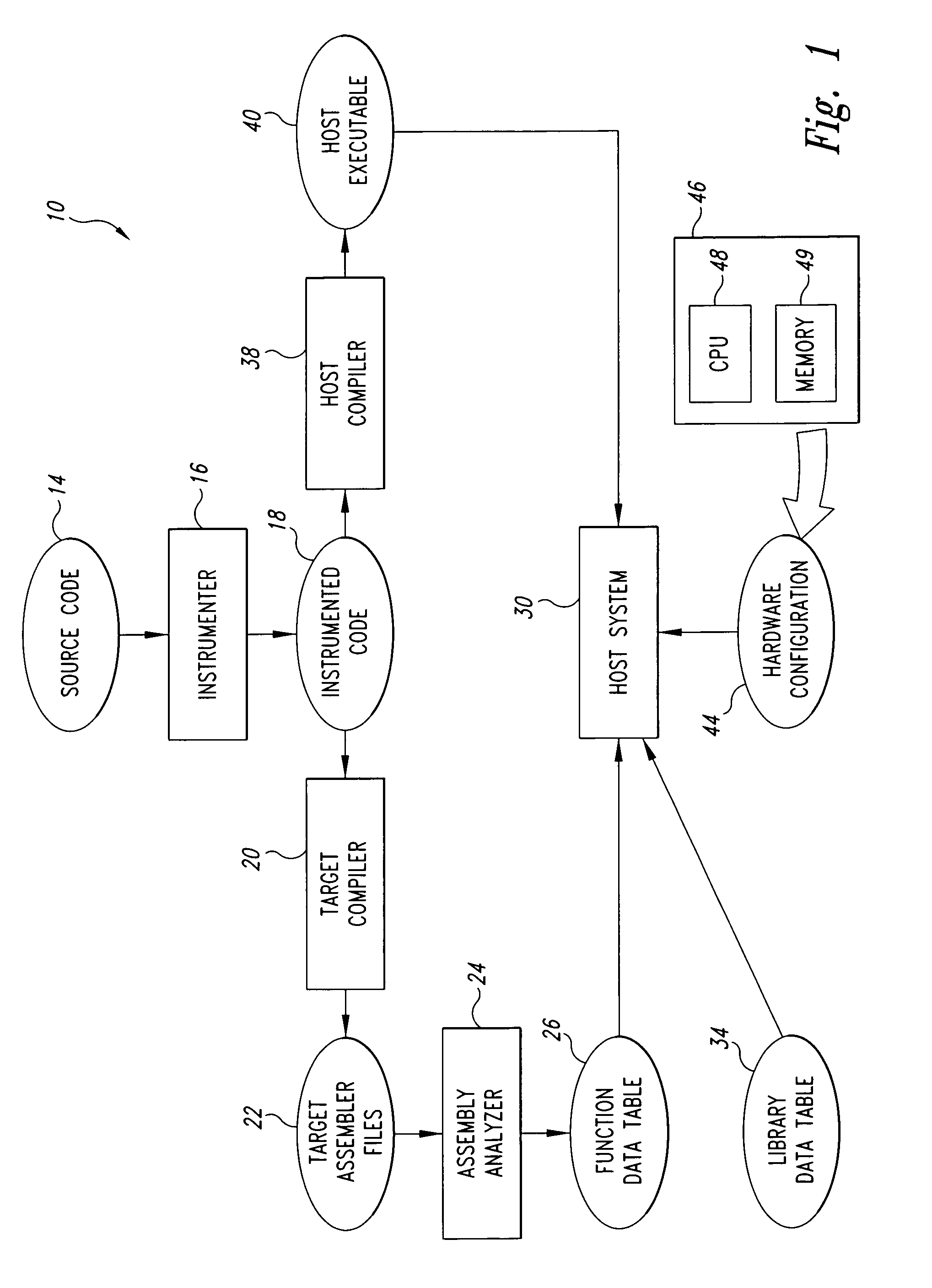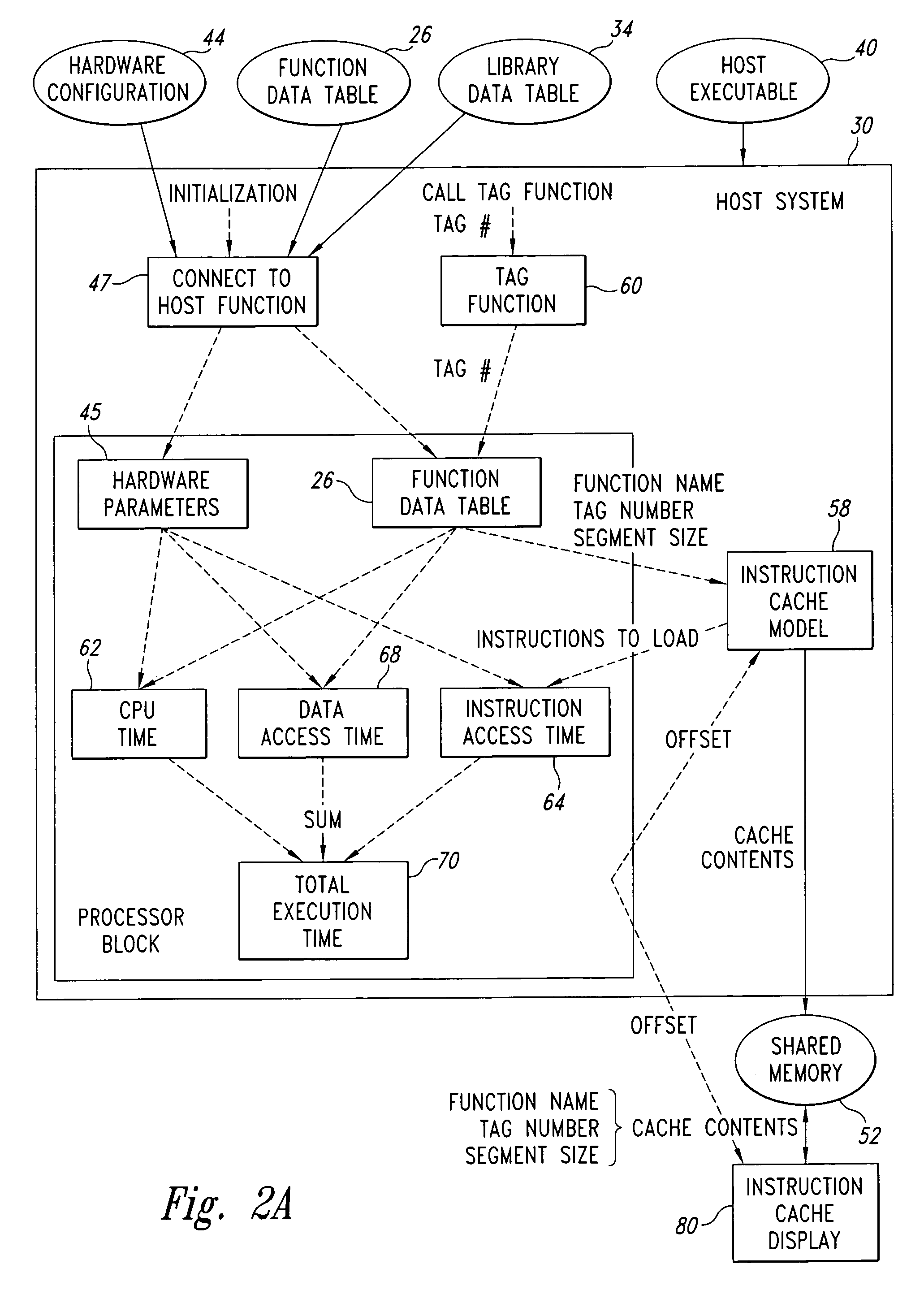Method and system for simulating execution of a target program in a simulated target system
a target system and target program technology, applied in the field of embedded system testing and development, can solve the problems of strict integration problems, the target program loaded at the time of the integration of the prototype target hardware and software does not work, and the embedded system has become very complex
- Summary
- Abstract
- Description
- Claims
- Application Information
AI Technical Summary
Problems solved by technology
Method used
Image
Examples
Embodiment Construction
[0021]The disclosed embodiment of the present invention allows for the early simulation of the target hardware and permits the parallel development of the target hardware and the target program. The disclosed system also allows the extensive use of existing debugging tools to aid the developer in the development and integration of the target system. The embodiments of the present invention calculate an estimated target program execution time for a simulated target hardware, as well as maintain an instruction cache image of the simulated target processor. The estimation technique accounts for detailed characteristics of the simulated target processor architecture, such as parallel execution, pipelining, caches, and pre-fetching. The information provided can be used by the software developer to forecast resource requirements, and identify target hardware bottlenecks and resource constraints prior to having the physical target hardware. Although there are conventional hardware simulato...
PUM
 Login to View More
Login to View More Abstract
Description
Claims
Application Information
 Login to View More
Login to View More - R&D
- Intellectual Property
- Life Sciences
- Materials
- Tech Scout
- Unparalleled Data Quality
- Higher Quality Content
- 60% Fewer Hallucinations
Browse by: Latest US Patents, China's latest patents, Technical Efficacy Thesaurus, Application Domain, Technology Topic, Popular Technical Reports.
© 2025 PatSnap. All rights reserved.Legal|Privacy policy|Modern Slavery Act Transparency Statement|Sitemap|About US| Contact US: help@patsnap.com



